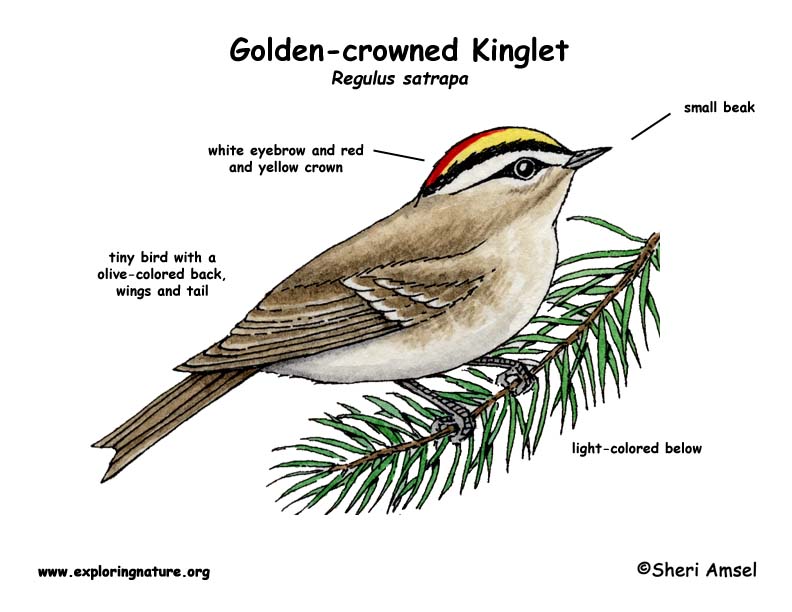

They spend the winters in southern Alaska and Canada south through the southern U.S. and into Mexico. They breed from southern Alaska and the Northwest Territories, across Canada to Newfoundland, south to northern U.S. and into southern mountain ranges.
They live mostly in coniferous forests but are also found in mixed woodlands and thickets.
They are a tiny bird with an olive back, wings and tail. They are light colored below and have a white eyebrow and a ruby crown with a yellow border and then a black border. Females only have a yellow crown.
They stay in north all winter.
They eat insects and insect eggs.
They make a deep, open cup nest of moss, lichen, spider web, and thin strips of bark and line it with feathers, grass, and fur. They hang the nest from a twig in tree. Females lay 3-11 white eggs with spots.
Kingdom: Animalia
Phylum: Chordata
Subphylum: Vetebrata
Class: Aves
Order: Passeriformes
Family: Regulidae
Genus: Regulus
Species: R. satrapa
When you research information you must cite the reference. Citing for websites is different from citing from books, magazines and periodicals. The style of citing shown here is from the MLA Style Citations (Modern Language Association).
When citing a WEBSITE the general format is as follows.
Author Last Name, First Name(s). "Title: Subtitle of Part of Web Page, if appropriate." Title: Subtitle: Section of Page if appropriate. Sponsoring/Publishing Agency, If Given. Additional significant descriptive information. Date of Electronic Publication or other Date, such as Last Updated. Day Month Year of access < URL >.
Amsel, Sheri. "Kinglet (Golden-crowned)" Exploring Nature Educational Resource ©2005-2024. December 17, 2024
< http://www.exploringnature.org/db/view/165 >

